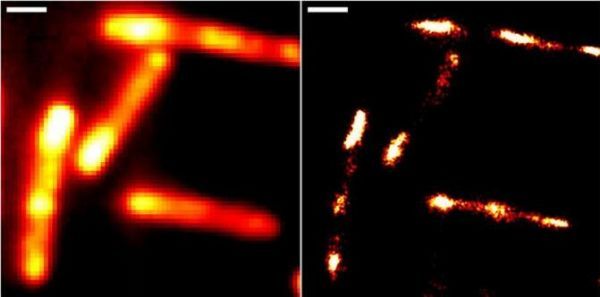Nature: Successfully achieved super-resolution RNA imaging in living cells!
- Normal Liver Cells Found to Promote Cancer Metastasis to the Liver
- Nearly 80% Complete Remission: Breakthrough in ADC Anti-Tumor Treatment
- Vaccination Against Common Diseases May Prevent Dementia!
- New Alzheimer’s Disease (AD) Diagnosis and Staging Criteria
- Breakthrough in Alzheimer’s Disease: New Nasal Spray Halts Cognitive Decline by Targeting Toxic Protein
- Can the Tap Water at the Paris Olympics be Drunk Directly?
Nature: Successfully achieved super-resolution RNA imaging in living cells!
Nature: Successfully achieved super-resolution RNA imaging in living cells! Interpretation of Nature Sub-Journal! Scientists have successfully achieved super-resolution RNA imaging in living cells!
In a research report titled “Super-resolution RNA imaging using a rhodamine-binding aptamer with fast exchange kinetics” published in the international journal Nature Biotechnology, scientists from Heidelberg University and other institutions have realized the process in living cells through research. Super-resolution RNA imaging.
RNA (ribonucleic acid) is the key to many basic biological processes. It can transmit genetic information, convert it into protein or support gene regulation. In order to understand the precise function of RNA in more detail, the researchers designed a new type of fluorescence imaging method, which can make living cell RNA imaging with unprecedented resolution.
This method is based on a new type of molecular marker, the RNA-based fluorescence called Rhodamine-Binding Aptamer for Super-Resolution Imaging Techniques (RhoBAST, Rhodamine-Binding Aptamer for Super-Resolution Imaging Techniques) The marker can be used in combination with the dye rhodamine; because of its unique characteristics, the marker and the dye can combine with each other in a very special way, so that a single DNA molecule emits light.
Then researchers can use single-molecule localization microscopy (SMLM, a super-resolution imaging technology) to make it visible. Due to the lack of suitable fluorescent markers, so far, direct observation of RNA through optical microscopy has been very serious. limits.

Image source: Heidelberg University/Karlsruhe Institute of Technology
The RhoBAST technology was jointly developed by scientists from Heidelberg University and the KIT Institute of Applied Physics. The markers developed by the researchers can be genetically encoded, which means that it can be fused with any RNA gene produced in the cell; RhoBAST It is non-fluorescent, but it can be lighted up (luminescence) by combining with the cell-permeable rhodamine dye in a very special way, which will lead to a sharp increase in the fluorescence achieved by the RhoBAST-dye complex, which is also excellent A key requirement for fluorescent images; however, for super-resolution RNA imaging, this type of labeling requires additional features.
The researchers found that the binding of each rhodamine dye molecule to RhoBAST only lasts for a second, and then it will break away again; within a few seconds, this process will repeat with a new dye molecule. Professor Gerd Ulrich Nienhaus said that it is quite rare to find a strong interaction between RhoBAST and rhodamine, and the exchange kinetics with extremely fast binding is quite rare; because rhodamine is only lit after RhoBAST is bound, so the label and A series of new interactions between the dyes cause constant “flicker”, this “switch” is exactly what is needed for single-molecule positioning imaging.
At the same time, the RhoBAST system can also solve another important problem. Fluorescence images are collected under laser light. Over time, dye molecules will be destroyed; rapid dye exchange ensures that the photobleached dye will be It is replaced by fresh dye, which means that a single RNA molecule can be observed for a longer period of time, which can greatly improve the resolution of the image.
Finally, the researchers pointed out that by visualizing the RNA structure in the intestinal flora and cultured human cells, we can prove with excellent positioning accuracy that RhoBAST may be an RNA marker. Now we can use super-resolution fluorescence microscopy to reveal the previously invisible details of subcellular structures and molecular interactions involving RNA, which will enable scientists to have a fundamental new understanding of the basic processes of biology.
(source:internet, reference only)
Disclaimer of medicaltrend.org



